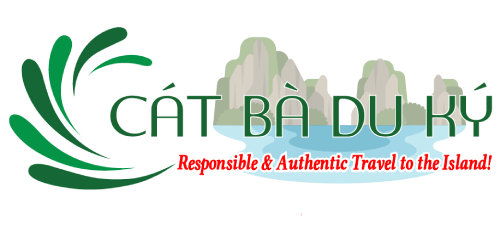Cat Ba Langur is one of the rarest primates in the world, found only on Cat Ba Island. Discover its unique traits, endangered status, and conservation efforts.
1. Introduction to Cat Ba Langur
The Cat Ba langur (Trachypithecus poliocephalus), also known in Vietnamese as Voọc Cát Bà, is one of the rarest primates in the world. Found only on Cat Ba Island in northern Vietnam, this species is considered a living treasure of the region. With its striking golden head contrasting against a black body, the Cat Ba langur has become a global symbol for wildlife conservation.
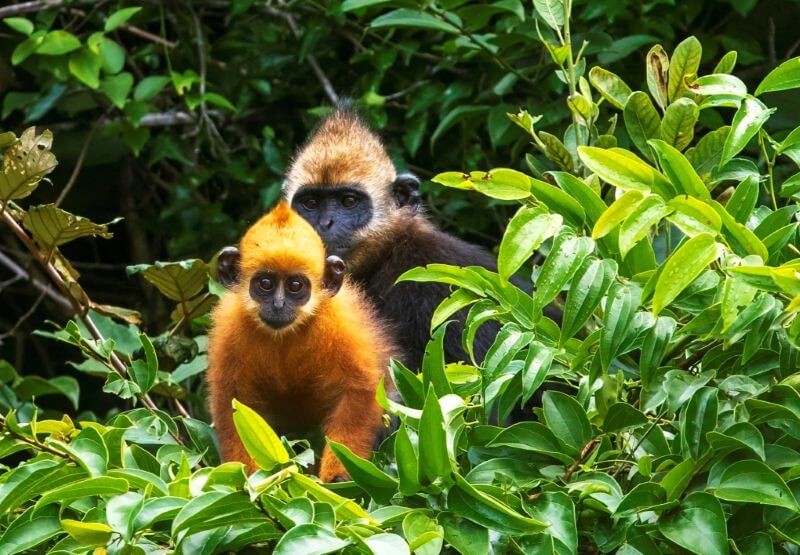
Cat Ba Langur
Sadly, this beauty comes with a heavy burden: the species is listed as Critically Endangered by the IUCN. Population numbers once dropped to fewer than 60 individuals, making it one of the most threatened primates worldwide. Although recent conservation efforts have helped stabilize the population, the risk of extinction remains very real.
So, why should you care? Beyond its stunning looks, the Cat Ba langur represents the fragile balance between humans and nature. Protecting this primate means protecting the unique limestone forests of Cat Ba and preserving biodiversity for future generations. In this article, you’ll learn key facts about the Cat Ba langur, what makes it special, the threats it faces, and how you can responsibly experience Cat Ba National Park while supporting conservation efforts.
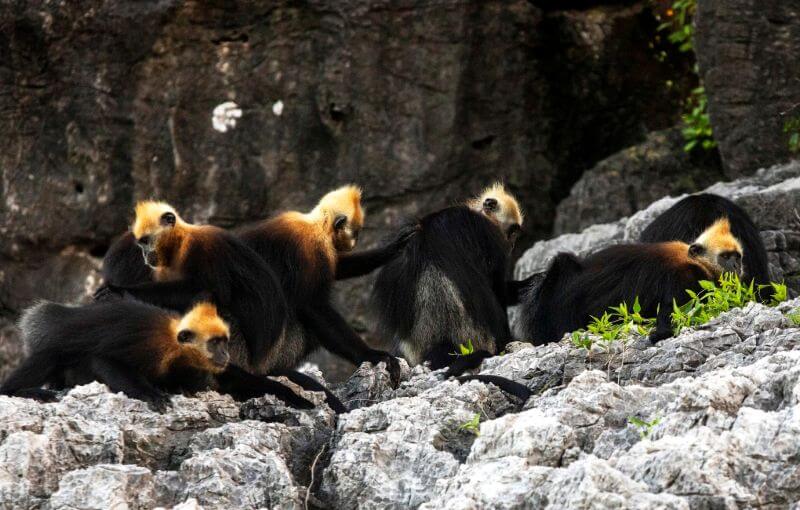
Cat Ba langurs usually live in small groups
2. Quick facts about the Cat Ba langur
If you’re just getting to know this rare primate, here are some essentials:
- Scientific name: Trachypithecus poliocephalus
- Vietnamese name: Voọc Cát Bà
- Conservation status: Critically Endangered (IUCN Red List)
- Appearance: Jet-black body with a golden-orange crown and cheeks. Long tail, which helps with balance on cliffs and rocky slopes.
- Estimated population: In the early 2000s, fewer than 60 individuals remained. Thanks to conservation work, recent estimates suggest about 80–90 langurs now survive in the wild.
- Habitat: Limestone karst forests and steep coastal cliffs of Cat Ba Island.
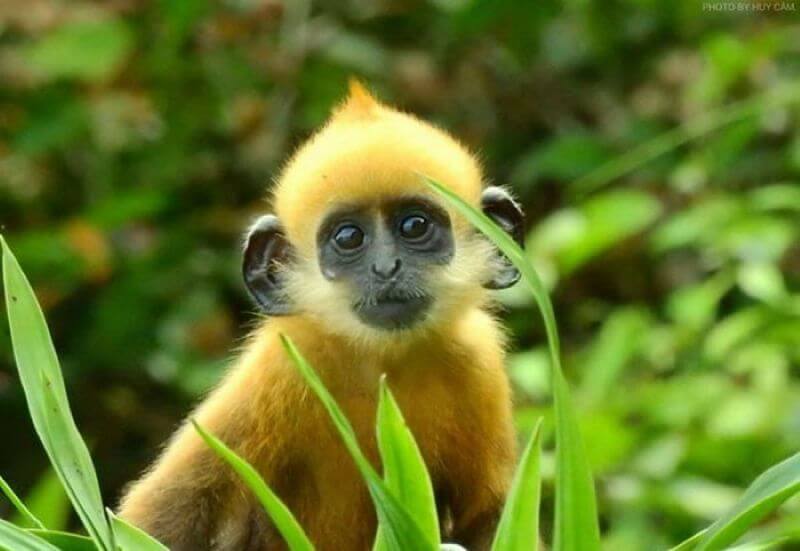
An orange-yellow baby langur
These quick facts highlight just how unique and fragile this primate is. Few species are so restricted to a single location. For travelers, knowing these basics will deepen your appreciation when visiting Cat Ba and its national park. For conservation-minded readers, these numbers show both the challenges and the hope that dedicated protection can bring.
3. What makes the Cat Ba langur special
Unlike many primates you may have seen across Asia, the Cat Ba langur is truly one-of-a-kind. Its lifestyle and adaptations are perfectly suited to Cat Ba’s rugged landscapes.
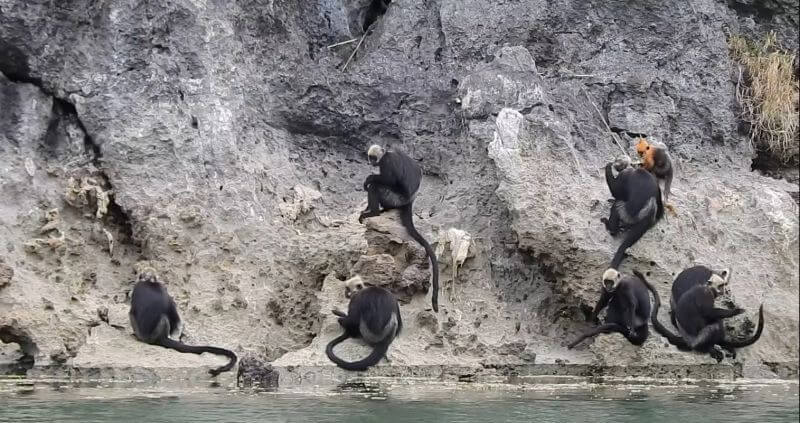
Langur groups usually live near cliffs
- Habitat: They live almost exclusively on limestone mountains and steep sea-facing cliffs. These challenging terrains protect them from predators but also limit their range to very small areas within Cat Ba National Park.
- Diet: The langurs are folivores, meaning most of their diet comes from leaves. They also eat flowers, shoots, and young fruits. Their digestive system is highly specialized to process fibrous plants.
- Social structure: Cat Ba langurs live in small family groups. Usually, a single male leads a harem of females and their young. Group sizes tend to be smaller than other langur species, making social interactions more intimate.
- Distinctive look: The golden crown is not just beautiful—it helps distinguish them from other langurs in Vietnam.
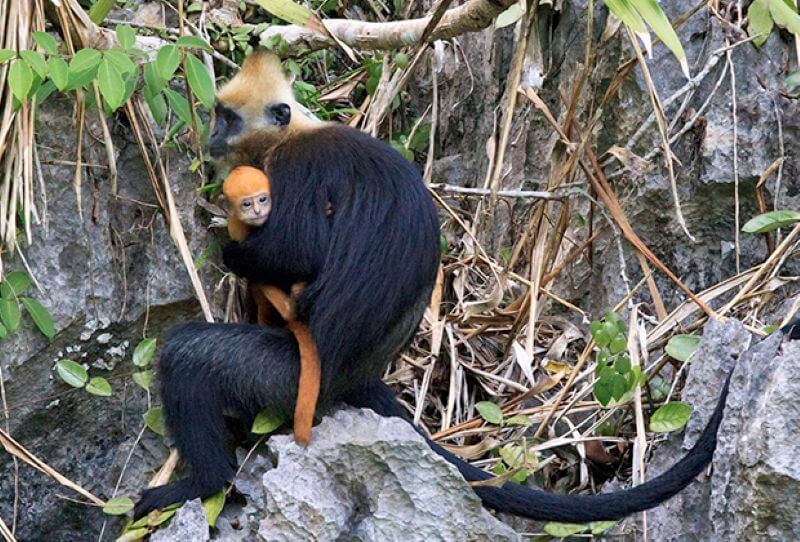
A mother langur holding her baby
What sets them apart is their endemic status: you cannot find Cat Ba langurs anywhere else in the world. For nature enthusiasts, spotting even a glimpse of this primate is like witnessing a living relic of evolution.
4. Conservation status and threats
The story of the Cat Ba langur is both tragic and hopeful. Once widespread across Cat Ba Island, their numbers plummeted due to:
- Hunting: In the past, langurs were hunted for traditional medicine or food.
- Habitat loss: Tourism development and local deforestation reduced their already limited living space.
- Small population size: With fewer than 100 individuals, the risk of inbreeding and disease outbreaks is extremely high.
- Climate change: Rising sea levels and shifting weather patterns also threaten their fragile coastal habitats.
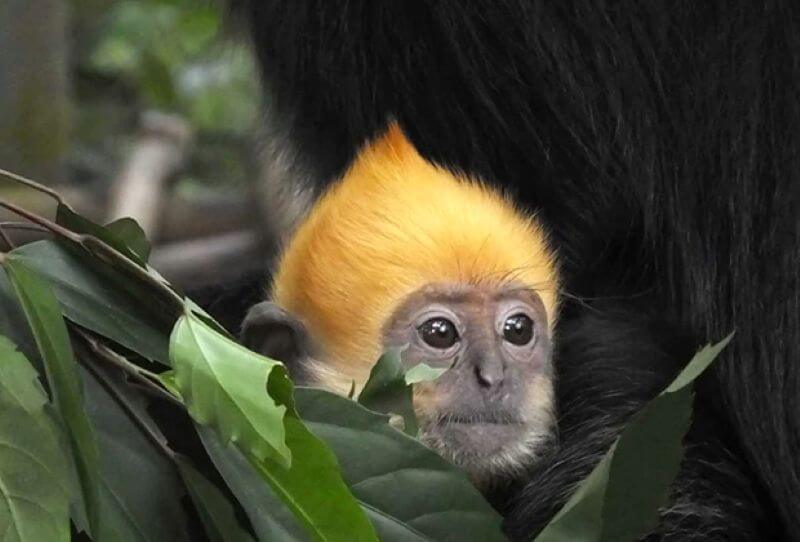
The round eyes of the langur
Population history:
- Pre-1990s: Several hundred individuals.
- Early 2000s: Fewer than 60 remained, raising alarms worldwide.
- Today: Around 80–90, thanks to intense protection by Cat Ba Langur Conservation Project and Fauna & Flora International.
5. Can you see Cat Ba langurs as a visitor?
The short answer: yes, but it’s rare and requires patience. The Cat Ba langur is one of the hardest primates to spot in the wild, and that’s actually good for its survival.
- Observation opportunities: Most sightings happen in remote parts of Cat Ba National Park, often during trekking or boat trips near limestone cliffs.
- Guided tours only: You should always go with an official park guide. They know the safe and ethical viewing spots without disturbing the langurs.
- Don’t expect close encounters: Seeing them up close is nearly impossible, and that’s how it should be. Responsible ecotourism prioritizes the langurs’ well-being over tourist selfies.
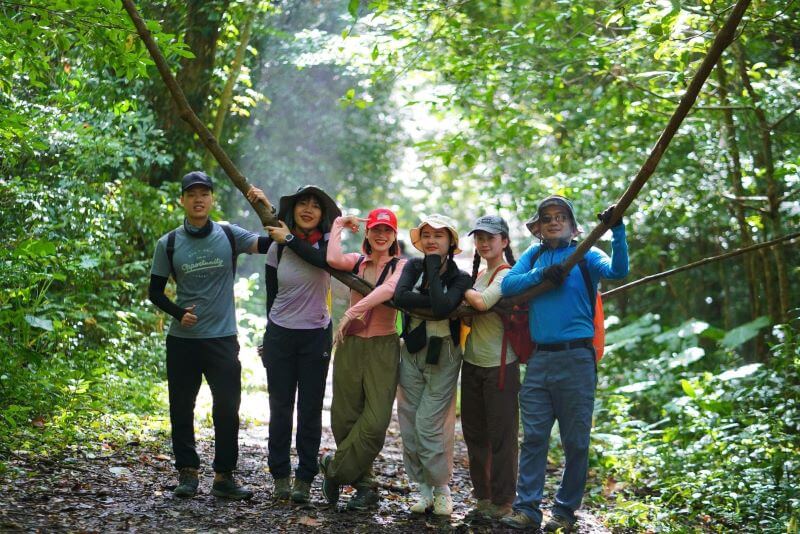
Trekking in Cat Ba National Park – a chance to see langurs
Responsible travel rules:
- Keep a safe distance; never try to approach or lure them.
- Do not feed the langurs—human food can harm them.
- Avoid flash photography or loud noises.
- Support eco-friendly tour operators who follow park regulations.
Even if you don’t see a langur, trekking through Cat Ba National Park is rewarding on its own—lush forests, rich biodiversity, and stunning views of Lan Ha Bay. And just knowing you are in the same forest as one of the rarest primates on Earth makes the experience special.
6. Conclusion
Cat Ba is not only about beautiful beaches and bays. It is also home to one of the rarest primates on Earth—the Cat Ba langur, waiting quietly among the limestone forests, a living reminder of why we must protect our natural world.
If you’d like to explore Cat Ba Island, feel free to contact Cat Ba Du Ky Travel at +84 989 745 338 for travel advice. You can also check out our full-package Cat Ba tours below:
- Lan Ha Bay - Ha Long Bay 1 Day Boat Tour From Cat Ba
- Night Kayaking Tour With Bioluminescence Plankton On Lan Ha Bay
- Cat Ba National Park - Trung Trang Cave Half Day Trekking Tour
- Lan Ha Bay - Ha Long Bay 2 Days 1 Night Cruise From Cat Ba Island
- Ha Long Bay - Lan Ha Bay - Cat Ba Island 3 Day 2 Night Tour From Hanoi
